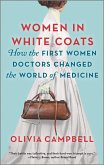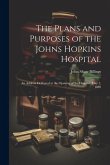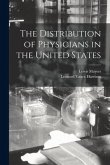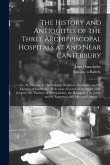Andere Kunden interessierten sich auch für
Produktdetails
- Verlag: Creative Media Partners, LLC
- Seitenzahl: 238
- Erscheinungstermin: 26. Oktober 2022
- Englisch
- Abmessung: 234mm x 156mm x 13mm
- Gewicht: 340g
- ISBN-13: 9781015434813
- ISBN-10: 1015434819
- Artikelnr.: 66477359
- Libri GmbH
- Europaallee 1
- 36244 Bad Hersfeld
- gpsr@libri.de
Florence Nightingale /¿nät¿n¿e¿l/, OM, RRC, DStJ (12 May 1820 - 13 August 1910) was a British social reformer and statistician, and the founder of modern nursing. Nightingale came to prominence while serving as a manager and trainer of nurses during the Crimean War, in which she organised care for wounded soldiers.[3] She gave nursing a favourable reputation and became an icon of Victorian culture, especially in the persona of "The Lady with the Lamp" making rounds of wounded soldiers at night.[4][5] Recent commentators have asserted Nightingale's Crimean War achievements were exaggerated by media at the time, but critics agree on the importance of her later work in professionalising nursing roles for women.[6] In 1860, Nightingale laid the foundation of professional nursing with the establishment of her nursing school at St Thomas' Hospital in London. It was the first secular nursing school in the world, and is now part of King's College London. In recognition of her pioneering work in nursing, the Nightingale Pledge taken by new nurses, and the Florence Nightingale Medal, the highest international distinction a nurse can achieve, were named in her honour, and the annual International Nurses Day is celebrated on her birthday. Her social reforms included improving healthcare for all sections of British society, advocating better hunger relief in India, helping to abolish prostitution laws that were harsh for women, and expanding the acceptable forms of female participation in the workforce. Nightingale was a prodigious and versatile writer. In her lifetime, much of her published work was concerned with spreading medical knowledge. Some of her tracts were written in simple English so that they could easily be understood by those with poor literary skills. She was also a pioneer in data visualization with the use of infographics, effectively using graphical presentations of statistical data.[6] Much of her writing, including her extensive work on religion and mysticism, has only been published posthumously.
Preface
Two papers read before the National Association for the Promotion of Social Science in October 1858
Evidence given before the Royal Commission on the sanitary state of the army
Three articles reprinted from The Builder.
Preface
Two papers read before the National Association for the Promotion of Social Science in October 1858
Evidence given before the Royal Commission on the sanitary state of the army
Three articles reprinted from The Builder.





![Colonial Hospitals and Lunatic Asylums [microform]: a Circular Despatch of January 1st, 1863, Addressed to the Governors of Colonies, After Reciting T Colonial Hospitals and Lunatic Asylums [microform]: a Circular Despatch of January 1st, 1863, Addressed to the Governors of Colonies, After Reciting T](https://bilder.buecher.de/produkte/65/65567/65567253m.jpg)


